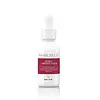What's inside
What's inside
 Key Ingredients
Key Ingredients

 Benefits
Benefits

 Concerns
Concerns

 Ingredients Side-by-side
Ingredients Side-by-side

Water
Skin ConditioningDimethicone
EmollientPropanediol
SolventGlycerin
HumectantRetinol
Skin ConditioningCaprylic/Capric Triglyceride
MaskingBakuchiol
AntimicrobialVaccinium Macrocarpon Fruit Extract
AstringentLactobacillus Ferment
Skin ConditioningTocopherol
Antioxidant1,2-Hexanediol
Skin ConditioningHumulus Lupulus Extract
AntimicrobialDimethiconol
EmollientPolyacrylate Crosspolymer-6
Emulsion StabilisingMaltodextrin
AbsorbentHydroxyethyl Acrylate/Sodium Acryloyldimethyl Taurate Copolymer
Emulsion StabilisingPotassium Sorbate
PreservativeSqualane
EmollientSodium Gluconate
Skin ConditioningCaprylhydroxamic Acid
Copernicia Cerifera Cera
EmollientCitric Acid
BufferingPolysorbate 20
EmulsifyingPolysorbate 60
EmulsifyingHelianthus Annuus Seed Oil
EmollientCaprylyl Glycol
EmollientHydroxymethoxyphenyl Decanone
Skin ConditioningDisodium Cocoamphodiacetate
CleansingC13-16 Isoalkane
SolventT-Butyl Alcohol
PerfumingXanthan Gum
EmulsifyingEthyl Ferulate
AntioxidantWater, Dimethicone, Propanediol, Glycerin, Retinol, Caprylic/Capric Triglyceride, Bakuchiol, Vaccinium Macrocarpon Fruit Extract, Lactobacillus Ferment, Tocopherol, 1,2-Hexanediol, Humulus Lupulus Extract, Dimethiconol, Polyacrylate Crosspolymer-6, Maltodextrin, Hydroxyethyl Acrylate/Sodium Acryloyldimethyl Taurate Copolymer, Potassium Sorbate, Squalane, Sodium Gluconate, Caprylhydroxamic Acid, Copernicia Cerifera Cera, Citric Acid, Polysorbate 20, Polysorbate 60, Helianthus Annuus Seed Oil, Caprylyl Glycol, Hydroxymethoxyphenyl Decanone, Disodium Cocoamphodiacetate, C13-16 Isoalkane, T-Butyl Alcohol, Xanthan Gum, Ethyl Ferulate
Water
Skin ConditioningSerine
MaskingGlycerin
HumectantLactic Acid
BufferingGlycine
BufferingPCA
HumectantUrea
BufferingAcetyl Glucosamine
Skin ConditioningGlucose
HumectantHistidine
HumectantLysine Hcl
Skin ConditioningGlutamine
Skin ConditioningLeucine
Skin ConditioningTyrosine
MaskingArginine
MaskingAspartic Acid
MaskingPhenylalanine
MaskingSodium Chloride
MaskingPotassium PCA
HumectantCalcium PCA
HumectantMagnesium PCA
HumectantBiosaccharide Gum-1
HumectantMaltodextrin
AbsorbentHydroxyethylcellulose
Emulsion StabilisingSodium Nitrate
SoothingSodium Hydroxide
BufferingSodium Gluconate
Skin Conditioning1,2-Hexanediol
Skin ConditioningCaprylyl Glycol
EmollientPotassium Sorbate
PreservativeWater, Serine, Glycerin, Lactic Acid, Glycine, PCA, Urea, Acetyl Glucosamine, Glucose, Histidine, Lysine Hcl, Glutamine, Leucine, Tyrosine, Arginine, Aspartic Acid, Phenylalanine, Sodium Chloride, Potassium PCA, Calcium PCA, Magnesium PCA, Biosaccharide Gum-1, Maltodextrin, Hydroxyethylcellulose, Sodium Nitrate, Sodium Hydroxide, Sodium Gluconate, 1,2-Hexanediol, Caprylyl Glycol, Potassium Sorbate
 Reviews
Reviews

Ingredients Explained
These ingredients are found in both products.
Ingredients higher up in an ingredient list are typically present in a larger amount.
1,2-Hexanediol is a synthetic liquid and another multi-functional powerhouse.
It is a:
- Humectant, drawing moisture into the skin
- Emollient, helping to soften skin
- Solvent, dispersing and stabilizing formulas
- Preservative booster, enhancing the antimicrobial activity of other preservatives
Caprylyl Glycol is a humectant and emollient, meaning it attracts and preserves moisture.
It is a common ingredient in many products, especially those designed to hydrate skin. The primary benefits are retaining moisture, skin softening, and promoting a healthy skin barrier.
Though Caprylyl Glycol is an alcohol derived from fatty acids, it is not the kind that can dry out skin.
This ingredient is also used as a preservative to extend the life of products. It has slight antimicrobial properties.
Learn more about Caprylyl GlycolGlycerin is already naturally found in your skin. It helps moisturize and protect your skin.
A study from 2016 found glycerin to be more effective as a humectant than AHAs and hyaluronic acid.
As a humectant, it helps the skin stay hydrated by pulling moisture to your skin. The low molecular weight of glycerin allows it to pull moisture into the deeper layers of your skin.
Hydrated skin improves your skin barrier; Your skin barrier helps protect against irritants and bacteria.
Glycerin has also been found to have antimicrobial and antiviral properties. Due to these properties, glycerin is often used in wound and burn treatments.
In cosmetics, glycerin is usually derived from plants such as soybean or palm. However, it can also be sourced from animals, such as tallow or animal fat.
This ingredient is organic, colorless, odorless, and non-toxic.
Glycerin is the name for this ingredient in American English. British English uses Glycerol/Glycerine.
Learn more about GlycerinMaltodextrin is a polysaccharide. It is derived from starch such as rice, corn, wheat, or potato starch.
In food, Maltodextrin is used to improve the texture and thicken a product. Due to its structure, it can help create a gel texture. As an emulsion stabilizer, it helps keep the ingredients in a product together.
As a polysaccharide, Maltodextrin has moisturizing properties. Polysaccharides are a type of carbohydrate. The top layer of skin uses polysaccharides to retain water, keeping the skin hydrated.
Maltodextrin is water soluble and has a sweet taste.
Learn more about MaltodextrinPotassium Sorbate is a preservative used to prevent yeast and mold in products. It is commonly found in both cosmetic and food products.
This ingredient comes from potassium salt derived from sorbic acid. Sorbic acid is a natural antibiotic and effective against fungus.
Both potassium sorbate and sorbic acid can be found in baked goods, cheeses, dried meats, dried fruit, ice cream, pickles, wine, yogurt, and more.
You'll often find this ingredient used with other preservatives.
Learn more about Potassium SorbateThis is the synthetic salt of gluconic acid, a form of PHA and mild exfoliant.
It is mainly used to stabilize oil and butter formulations from going bad. Sodium gluconate is a humectant, pH regulator, and chelating agent.
Chelating agents help neutralize unwanted metals from affecting the formulation.
Sodium gluconate is water-soluble.
Learn more about Sodium GluconateWater. It's the most common cosmetic ingredient of all. You'll usually see it at the top of ingredient lists, meaning that it makes up the largest part of the product.
So why is it so popular? Water most often acts as a solvent - this means that it helps dissolve other ingredients into the formulation.
You'll also recognize water as that liquid we all need to stay alive. If you see this, drink a glass of water. Stay hydrated!
Learn more about Water